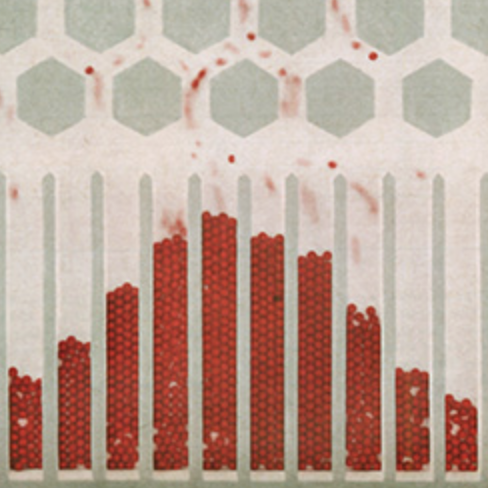San Antonio: Two Talks on Primes
by Brian Hayes
Published 25 January 2006
Small Gaps between Prime Numbers: The Work of Goldston-Pintz-Yildirim. Kannan Soundarajan (University of Michigan, Ann Arbor). Soundarajan began by pointing out that it’s been quite a good millennium, so far, for work on prime numbers. In the first few years we’ve had a proof that testing primality can be done in polynomial time, we’ve had the work described here on small gaps between primes, and we’ve had another intriguing result (see below) on primes in arithmetic progression.
What’s a small gap between primes? Except for 2 and 3, no consecutive integers can both be prime, so the smallest possible separation between two prime numbers is 2. Among the first few hundred primes, such “twins” are fairly common—3 and 5, 5 and 7, 11 and 13, 17 and 19, 29 and 31, 41 and 43…. But they get sparse as you go farther out the number line. Nevertheless, a celebrated conjecture says there is no end to twin primes; there are infinitely many of them, and they can be found even among arbitrarily large numbers. Proving this conjecture would be very big news in number theory. Dan Goldston, János Pintz and Cem Yildirim have not done that, but they’ve taken a step in the right direction. Soundarajan explains: “Resolving a long-standing open problem, they proved that there are infinitely many primes for which the gap to the next prime is as small as we want compared to the average gap between consecutive primes.”
One might ask: Why is this work being described by Soundarajan rather than by Goldston, Pintz or Yildirim? The answer is that the talk was part of a special session on “current events,” an innovation now in its fourth year at the Joint Mathematics Meetings. The talks in this series are modeled on those of the Bourbaki seminars held in Paris since 1948, where it’s a tradition for one mathematician to give an expository account of someone else’s work. The American version of this scheme is working very well; the “current events” talks are always among the best and best-attended events of the annual meeting. Soundarajan’s lecture was a thing of beauty. (Soundarajan is the co-recipient, along with Manjul Bhargava, of the first Ramanujan Prize awarded by the Shanmugha Arts, Science, Technology, Research Academy (SASTRA) in Tamil Nadu, India. But there’s another Ramanujan Prize—how confusing!)
Like the Bourbaki seminars, the current-events lectures are accompanied by printed notes of each talk. A pamphlet with the notes was handed out at the meetings, but they will also eventually be published online and in the Bulletin of the American Mathematical Society.
Patterns of primes. Ben Green (University of Bristol). Among the twin primes is one set of triplets—3, 5 and 7—but a little thought shows there can’t be any more: If p is a prime greater than 3, then either p+2 or p+4 must be divisible by 3, and hence is not a prime. Likewise there can’t be any prime quadruplets separated by intervals of 2. What about arithmetic progressions with larger differences between successive primes? Here is a 10-member progression of primes with a common difference of 210: 199, 409, 619, 829, 1039, 1249, 1459, 1669, 1879, 2089. Two years ago, Ben Green and Terence Tao proved that the primes including arbitrarily long arithmetic progressions (arXiv preprint). This is one of those cases where the result didn’t come as much of a surprise, but the proof did. No one had seriously doubted that arbitrarily long progressions exist, but until Green and Tao showed the way, proving it seemed very difficult.
The proof itself remains very difficult. It was the subject of a “current events” lecture by Bryna Kry at last year’s Joint Meetings; this has just been published. This year, one of the authors gave an insider’s account.
The work on small gaps between primes and the theorem on arithmetic progressions of primes have interesting connections. It was an early false start by Goldston and Yildirim that gave Green and Tao a key tool for their proof. And the two results apparently have deeper connections. Green commented, “If you don’t have arbitrarily small gaps, then there must be something very weird about primes in arithmetic progression.”
Publication history
First publication: 25 January 2006
Converted to Eleventy framework: 22 April 2025



